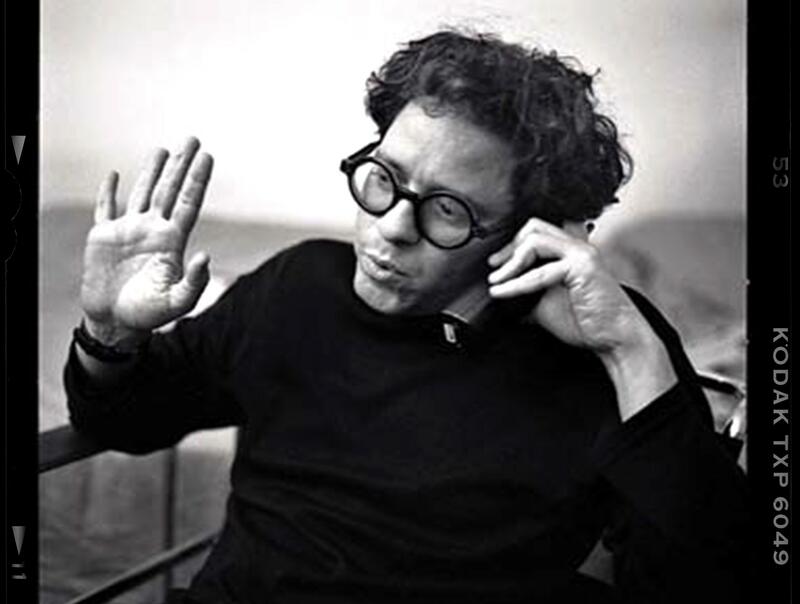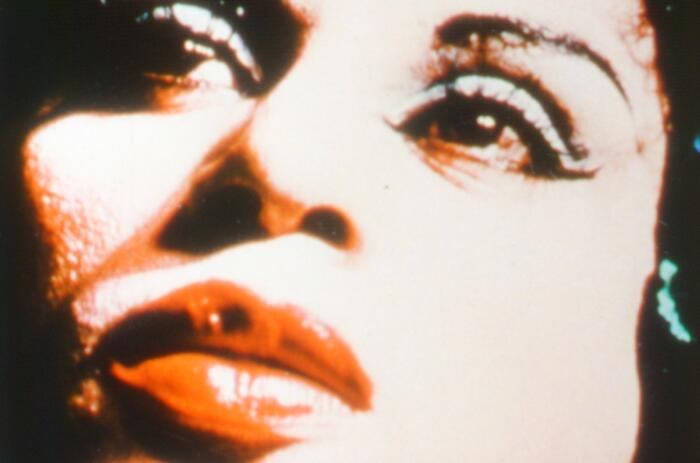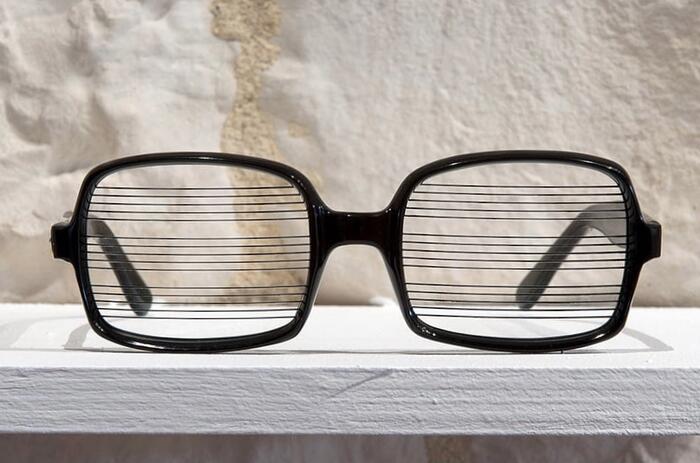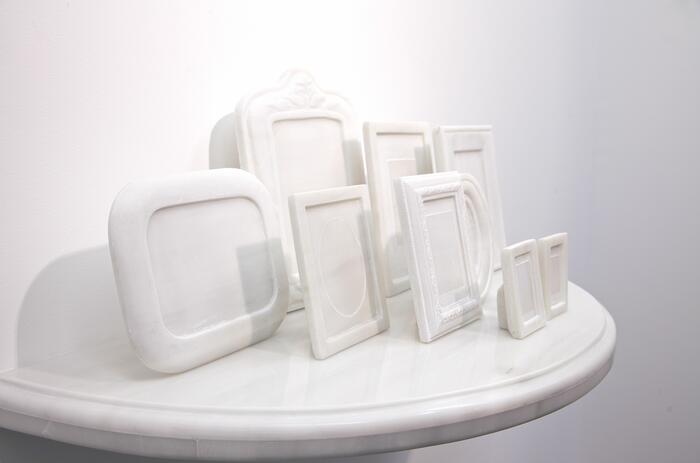ARTURO CUENCA MEMORIAL AT THE AMERICAN MUSEUM OF THE CUBAN DIASPORA
The memorial of the Cuban artist Arturo Cuenca Sigarreta (1955-2021), held on the same September 21 as his birth, in the American Museum of the Cuban Diaspora, was a symbolic event, surely the first of many that, after his early death, will finally allow the artistic institutions to recognize the visionary character in the work of this unruly and complex creator, who, like few others, embodied a way of criticizing power, both institutional and political, that did not compromise with convenience.

This great conceptual pioneer ─one of the avatars of his possibilities in a medium such as photography, as recognized by the critic Julia Herzberg in 1993- burst with his works in multiple media, both admired and misunderstood, in the practices of Cuban art in the eighties; he left his vibrant traces in Mexico at the end of that decade and the beginning of the nineties, as “mentor and founder of the Nina Menocal Gallery”, according to the gallery owner who considers him “a pioneer of contemporary art in this Aztec city”; and then his creative irreverence radiated in New York and Miami. In this last city, critics and artists admit the value of his sustained performance of resistance to all forms of omnimous power - from political tyrannies to the absolutist control of the mass media - that was his entire life.
The memorial was inaugurated with the words of the director of the Museum, Carmen Valdivia, who highlighted the importance of this “celebration of the life of Arturo Cuenca” which was attended by about a hundred people. The commemoration arose as an initiative of the collectors Arturo and Liza Mosquera who not only included Cuenca in various exhibitions of their collection in museums or in their alternative art spaces, Farside Gallery and Art@Work, but also had “the privilege to present his latest creative project The Facebook Work, between November 2019 and June 2020”. Arturo Mosquera recalled that listening to the brilliant monologues of this "genius, creator and political activist par excellence" was hypnotizing.
The tribute, which was attended by Cuenca's sister, Ingrid Carmenate, began with a video by Adonis Díaz that included the words of her brother José Antonio Jordán Sigarreta, read by actress Gretel Trujillo: “Arturo was not an artwork creator; art was his life. He carried art in his ideas, in his gestures, in his way of dressing, in his frank smile, in the unusual way in which he approached a meeting and became the very center of the event; the discussion then turned into a party, the party into a reason to magnify life”.
The writer Wendy Guerra had farewelled him shortly before with these words: “… my Japanese theater teacher, my hairdresser, my private designer, the man who taught me the aesthetic way in which art and dresses become shields. Goodbye, dear mountebank. This is the end of an era”. "Like everyone who has ever known Cuenca," wrote journalist Silvana Paternosto in an article published by the Financial Times, "I consider myself fortunate to have known this independent spirit ...". She wrote that the artist who in the eighties stood up to the ideologue of the Revolution, Carlos Aldana, becoming "the champion of freedom of expression" who "infuriated Castro"; has taken on a new life after his death, when the same street protesters who demanded that freedom began to circulate a video from the eighties in which he was seen "painting, dancing, playing chess, and, of course, speaking" .
-
Artista cubano Arturo Cuenca, New York, 2002. de la Serie "Rostros de La Isla Dispersa" Pedro Portal.
-
Left Wing Key, 2000. Arturo Cuenca. Acrylic on canvas. 35 x 59 inches. Colección de Liza y Arturo F. Mosquera
-
Utopyssey: Shipbuilding, 2002. Arturo Cuenca. Mixed technique on canvas, 52 x 80 in
-
Milky Way Raining Over Miami, 2014. Mixed technique on canvas, 136 x 42 ins
-
Focus-Everywhere I. Circa 1970. Arturo Cuenca.
-
Iconocracia, Arturo Cuenca El revolucionario
-
inSITE2000, Arturo Cuenca. You are aquí
-
Cortesia de Irene Lopez Kuchilan
-
Vista de la instalación del proyecto The Facebook Work
Cuenca was unstoppable in his way of enunciating the truth since his student days, as recalled by a member of the public, Wifredo Ramos, who spontaneously evoked an occasion in which, during a critical exercise in which he himself participated, along with key artists of their generation like Consuelo Castañeda and Humberto Castro, Cuenca publicly attributed the unpronounceable qualifier of “dictatorship” to the regime and refused, to the effort of his companions, to tone down his words to avoid the harsh consequences.
The musician, philosopher and critic Alfredo Triff corroborated in his intervention that Cuenca, "performative, jovial, curious, musical, a pain in the neck", was, above all, a debater who "had a suicidal attachment to the truth." "Going against the art system means disappearing as an artist," he pointed out in a review published in Rialta about his last exhibition, where he described that Cuenca, "the theory made flesh", had crashed in that unequal struggle. In his text he commented on the title of one of his “photosophies” ─category invented by him─ Holocastro or The Grand Dictraitor: “The hackneyed word holocaust becomes Holocastro, and Great Dictator, title of Charlie Chaplin's most commercial film (1940) , becomes Dictraitor (dictator/traitor)”. At the memorial he evoked other sharp and dangerous verbal games, such as when he proposed to change the term "pandemic" to "pan-de-media", constructing this designation with the double meaning of "media". "They are, simply, Cuenquisms for the future" predicts Triff. Cuenca was not, as he theatrically proclaimed “the most famous artist you've ever heard of,” but he was one of the best Cuban conceptual artists and the bravest in swallowing the fire of his words, not only open to polysemy but also capable of collapsing monolithic thoughts.
Members of the Miami artistic community participated in the tribute offered to the life and work of Arturo Cuenca, including Heriberto Mora, who exhibited a portrait of the artist; Pedro Portal, who portrayed him; and generational companions such as José Bedia or Gustavo Acosta, who shared with Cuenca their exile in Mexico, as well as Ramón Williams, Julio Antonio, and Mariano Costa, among others. The artist and gallery owner Charo Oquet sent a note to the organizers, highlighting the contribution of this “charismatic thinker and intellectual admired by many”. "The history of art in Miami would not be the same without him," she wrote.
Cuenca was consumed on the margins to which the true rebels are condemned, but the echo of his thought and creation will continue to radiate. Not only as a tutelary figure for the multiple ways of resistance on the island where he was born, but as the artist who - according to the Aluna Curatorial Collective, which also exhibited him - embodied in his work the ideal of Greek parrhesia: a way of "speaking truth”, at any cost, defending freedom of expression as an ultimate form of tenderness for the world.






